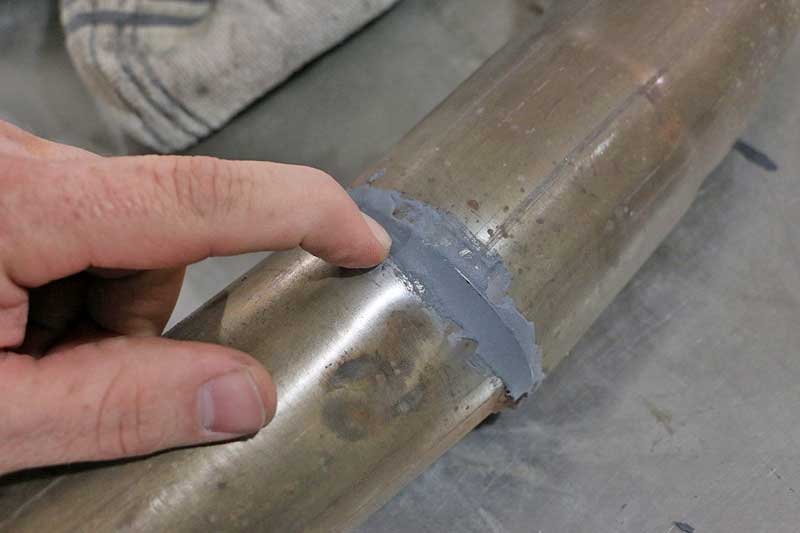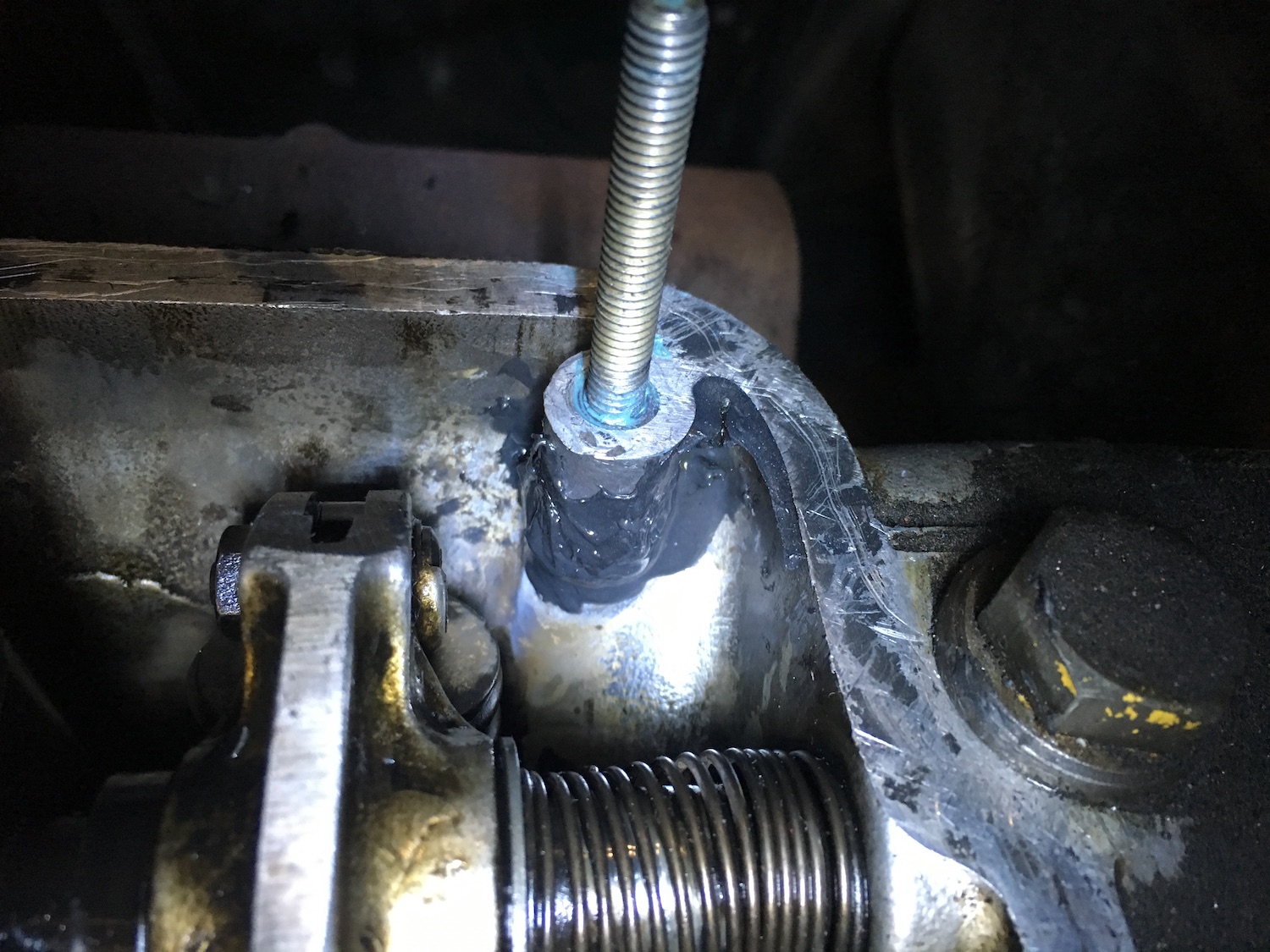I’m in the process of building an outdoor water pipe line. The pipes need to be bonded with J-B Weld, so we’ve decided to go ahead with that. After doing some research, I have two questions about this product:
1) Can I clean the welds after they’re done?
2) Can I apply it on top of the metal and then let it cure?
The first question is easy — yes you can! You’ll just need to get your hands dirty and remove any debris from the weld. As far as applying it to the top layer of the pipe, I found conflicting information out there. Some say you can’t do it at all, while others say that it will not hurt anything if you apply it to the top layer. It’s also recommended to wait 48 hours before painting or staining the entire thing. So, should I apply the J-B Weld to the top layer after the pipes are finished, let it dry for 48 hours, and then paint/stain everything else? Or should I only apply it to the bottom layer (in which case, I’d like to know how to remove it once it’s cured)?
You’re right to be concerned about using J-B Weld on top of the metal because it might cause some problems. In general, you want to only use products designed specifically for the job you’re trying to perform. If you apply something that isn’t meant for bonding metals together, you could end up damaging them. And depending on the type of metal you’re working with, the bond could fail. There’s no way around this kind of damage, but the good news is that it’s easier to repair than replace.
The first thing that matters the most for the people is the details what re the various options and how long does jb weld take to dry. If the person will collect the answer to main question in advance then achieving the goals will become easy for him.

If you’re going to apply J-B Weld on top of the metal, you’ll want to make sure you use the correct type. This stuff has a specific formula. Check the packaging to see what it’s called. For example, the one I used to cover these copper pipes was “Titanium Bonding System” by Adhesive Technology. Now, I don’t work with titanium myself, so I can’t tell you exactly what’s in it, but I can tell you that you want to look for something with a similar name.
There are other ways to bond metal together. One option would be to coat the metal with epoxy resin and let it harden. Another would be to use a self-etching primer or primer plus. Both of those options will require you to sand down the metal to prepare it for them. But both methods will leave a much better bond than J-B Weld.
Now, when I talk about removing J-B Weld, I’m not talking about removing it from the metal. Instead, I’m referring to removing it from the wood it’s bonded to. You need to use a solvent to dissolve the adhesive.
A number of different solvents are available to help you. They include acetone, methyl ethyl ketone (MEK), methylene chloride, mineral spirits, xylene, and toluene. Each of these chemicals has its own set of benefits and drawbacks. For example, MEK is more toxic than most of the others, although it does help dissolve the material quickly. Mineral spirits is another popular solvent, but it’s highly flammable. Xylene works best with PVC plastic, but it’s very toxic. Toluene is nonflammable, but it’s odorless and colorless so you may not be able to smell it unless it’s spilled. Acetone is probably the least toxic of the bunch, although it also requires longer exposure times. Regardless of which solvent you choose, read the instructions carefully and follow the directions precisely.
Now, back to your original question: How do you remove the J-B Weld once it’s been applied? I’m glad you asked! I’ll give you my method below. Again, this is based on my experience with J-B Weld. Feel free to try it and adjust it to suit your needs.
Step 1: Preheat the oven to 150°F.
Step 2: Put the J-B Weld into a glass baking dish and place it in the oven. Allow it to heat up for 15 minutes.
Step 3: Take the J-B Weld out of the oven and allow it to cool. If it doesn’t come off easily, you’ll need to use a little bit of acetone to help break it loose. Once it comes off, wipe it up with a rag.
Step 4: Coat the metal with a thin layer of mineral spirits.
Step 5: Wipe the J-B Weld off again with a rag.
Step 6: Apply a second layer of mineral spirits.
Step 7: Repeat steps four through six until each side of the pipe line is coated.
Step 8: Let the entire system soak overnight to ensure that the J-B Weld is completely dissolved.
Step 9: Take the system outside and scrape the excess J-B Weld away.
Step 10: Rinse the pipes with fresh water.
Step 11: Dry them thoroughly with a paper towel.
Step 12: Paint or stain the entire system.
Step 13: Enjoy your new water pipe line!
J-B Weld is definitely a great choice for bonding pipes, especially if you’re in a situation where the pipes need to be installed underground. The adhesive won’t crack due to soil pressure, and you won’t have to worry about breaking the seal during installation. That said, it is possible that the adhesive itself could crack over time. When that happens, you’ll need to call a professional to repair it.
In many cases, you can simply patch the area using duct tape. But before you do that, take a look around the room where you plan to install the pipe. Is there anywhere you could put it in plain view? Because if someone notices that you’ve patched the pipe, it doesn’t matter how well you covered it up. Once you’ve found somewhere that’s safe to put it, go ahead and make the repairs.

As far as cleaning up the mess, you have several options. Again, let me reiterate that you shouldn’t attempt this task yourself.
When you contact a company like this, make sure they understand what you’re trying to accomplish. If you’re looking to install a new water pipe line, they’ll need to know exactly where you’re planning to put the pipe. If you’re not 100% certain about where you want to place it, you should call a professional. Otherwise, they might drill holes in the wrong spot, which could lead to serious leaks.
Once you do find a company to help you, here are a few things to keep in mind:
- Make sure they send someone who knows what they’re doing.
- Get multiple bids.
- Ask them to come back and do a complete inspection afterward.
- Don’t forget to ask about the warranty.
Again, I recommend contacting a professional who specializes in this type of work. They’re a lot cheaper than hiring a plumber, and they’ll be able to handle all the details. Plus, they’ll have the tools necessary to properly clean up the mess.




